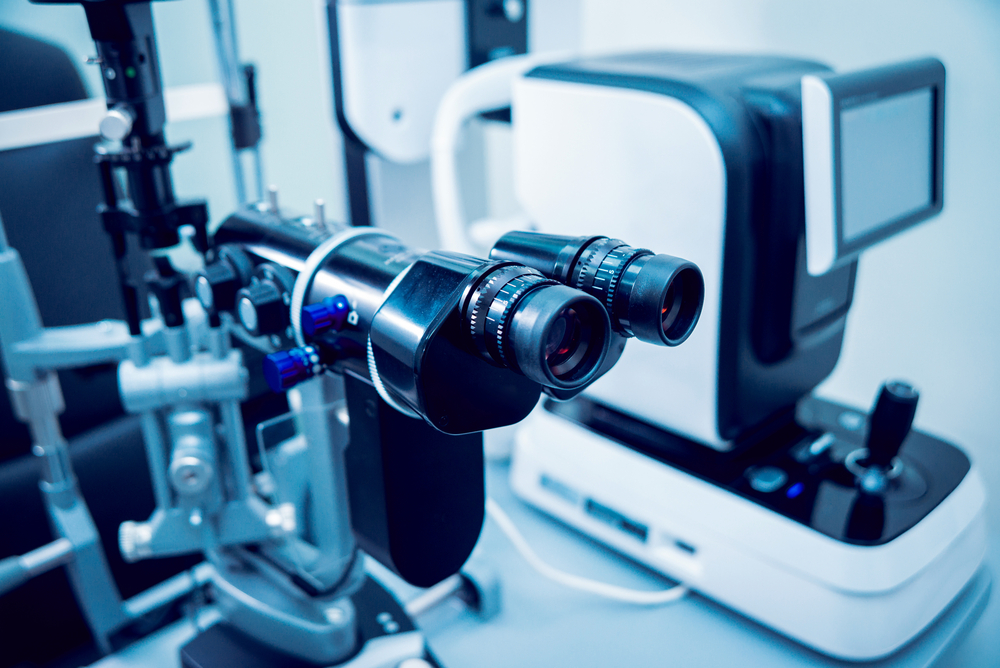Posted by: Focal Point Vision in Blog

Laser vision correction is one of the most popular elective surgical procedures in the United States. LASIK is the best-known type of vision correction surgery, but not everyone is a good candidate for it.

LASIK involves reshaping the cornea to correct common vision issues like nearsightedness or farsightedness. If you are not a good candidate for LASIK, your eye doctor might recommend a different procedure better suited for you and your eyes.
Refractive lens exchange (RLE) is a different type of refractive procedure that can be an alternative to LASIK. Instead of reshaping the cornea, RLE can correct vision by replacing the natural lens inside your eye.
RLE is also an excellent option for those looking for a solution for presbyopia. Keep reading to learn more about RLE, including the benefits and what happens during the procedure!
What Is RLE?
RLE is a type of vision correction surgery. Unlike LASIK and other procedures that correct vision by changing the shape of the cornea, RLE corrects vision by removing the eye’s natural lens.
During RLE, your eye doctor removes your natural lens and replaces it with an artificial lens called an intraocular lens, also known as an IOL. IOLs have a corrective prescription that improves vision the same way a contact lens does.
Unlike contact lenses, the IOL is placed inside the eye as a permanent corrective device. RLE surgery can be used to treat a variety of different vision issues, including:
- Nearsightedness
- Farsightedness
- Age-related farsightedness (presbyopia)
- Astigmatism
When you decide to get RLE surgery, you can choose what type of vision-correcting IOL will work best for you. There are several categories of IOLs:

Monofocal IOLs
Monofocal IOLs improve vision at only one distance, such as close vision for activities like reading or distance vision for activities like driving. However, you may still need glasses for some activities with monofocal RLEs.
Multifocal IOLs
Multifocal or trifocal IOLs work like bifocal or trifocal glasses to improve distance, intermediate, and near vision. These lenses can allow greater visual freedom and reduce dependence on visual aids after the procedure.
Toric IOLs
Toric IOLs are lenses that address astigmatism. If you have astigmatism, your eye doctor will tell you if a toric lens may be able to help correct your vision.
What Are the Benefits of RLE?
RLE is a safe, effective option for vision correction surgery. Like LASIK, it offers permanent vision correction.
Most people experience a noticeable improvement in their vision within a few days of the procedure. However, for others, it can take a few weeks to notice the full potential of your vision.
Other benefits of RLE surgery include:
- Quick recovery
- Reduced need for glasses and contact lenses
- Effective for people who may not be good candidates for LASIK
- Prevents future cataracts
- Corrects presbyopia
What Happens During RLE Surgery?
RLE is an outpatient procedure, meaning you will be able to go home afterward. You will be awake the whole time, though your eye doctor may offer you medication to help you feel more relaxed during the procedure.

You won’t be able to drive yourself, so make sure you have arrangements for a ride home. Before starting the procedure, your eye doctor will use eye drops to numb your eyes.
Once your eyes are ready, your eye doctor will make a small incision on the surface of your eye. They will then use specialized tools to remove the natural lens from your eye.
After this, they will place the IOL in your eye and make sure it’s settled into the proper position. The whole process takes under thirty minutes.
The recovery from RLE can take several weeks. It’s important to follow all instructions provided to you by your eye doctor for a smooth recovery.
What is the Recovery from RLE?
Right after the procedure, you may feel some discomfort. Your eye might feel sore or gritty, and it might be more watery than usual.
This will typically get better within a day or two. Your eye doctor will give you an eye shield to wear for the first day and overnight.
The shield will prevent you from rubbing your eye in your sleep, and you will also receive special drops to prevent infection. Your eye doctor will want to see you the next day to check on your eyes and see how well you are recovering.
They will tell you when you can return to regular activities such as driving, exercising, and returning to work.

Is RLE Safe?
The surgical procedure for RLE is the same technique used for cataract surgery. It’s one of the most common eye surgery techniques, and it has an excellent safety record.
Who Should Get RLE?
RLE is an effective option for people who want to improve vision without relying on glasses or contacts. RLE is an alternative for people who are not good candidates for LASIK or PRK vision correction surgery.
RLE can also correct presbyopia, also known as age-related nearsightedness. If you are not a good candidate for another type of laser vision correction, RLE surgery might be right for you.
Do you want to learn if you might be a good candidate for RLE? Schedule an appointment at Focal Point Vision in San Antonio, TX, today!
